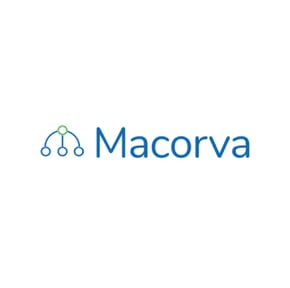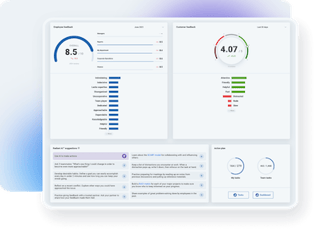
Employee Engagement Common Missteps: Why Good People Quit
Employee engagement impacts many aspects of the workplace, including employee performance, productivity, and morale. It is also a key indicator for overall organizational growth, as research shows that a more engaged workforce drives greater profitability, customer satisfaction, and earnings per share than a less engaged workforce. Sustained success depends on engagement because engaged employees have a strong emotional bond with their work and are committed to performing at their best each and every day.
Research by Gallup found that 73 percent of actively disengaged employees are looking for new opportunities, compared to only 37 percent of engaged employees. But what causes engagement to decline to the point where good employees are driven to look for opportunities elsewhere? Here are six factors that contribute to low engagement:
Lack of Recognition
Recognition is one of the single most effective ways to drive higher engagement among employees. When employees receive recognition for their effort and results, they know they’re appreciated, and they’re more likely to develop a stronger bond with the company. In a global employee engagement survey conducted by Aon, employees named “rewards and recognition” the strongest driver of engagement. Respondents across companies large and small, spanning a range of industries and geographies, said that “recognition for contributions (beyond pay and benefits)” was a clear factor in helping them feel emotionally invested in their work and committed to the company and its goals.
Employee recognition comes in many forms, from compensation and incentives to a nicely worded thank-you email or kudos in a team meeting. Without recognition, employees feel unappreciated and less motivated to do their best work. Just as recognition drives engagement, a lack of recognition leads to poor engagement. Eventually, disengaged employees give up and seek other opportunities where they’ll feel more appreciated.
An Unsupportive Manager
How a manager engages the team, sets expectations, and provides feedback has a strong effect on employee engagement. Managers can support employees and position them for success, or they can be unsupportive and distant, driving a wedge between themselves and their team. Either way, manager behavior can make or break employee engagement. According to Gallup research, 70 percent of the variance between engaged and disengaged employees is owed to manager behavior. Gallup also found that one in two employees left their job “to get away from their manager.” Managers aren’t entirely responsible for every aspect of the employee experience, but supportive actions go a long way in driving healthy employee engagement. Conversely, when a manager destroys trust, communicates poorly, or generally makes employees feel unsupported, employees will naturally seek other opportunities.
Poor Relationships with Coworkers
No person is an island, and relationships with coworkers affect an employee’s level of engagement at work. In today’s workplace, collaboration apps, email, and texts keep employees connected, and job success often depends on the support and input of others on the team. For many, the strength of coworker relationships just makes the workday more pleasant. On the flip side, when relationships with coworkers break down, employees can feel alone, disconnected, and unsupported, which negatively affects their engagement. Whether because of inadequate communication or failure to support one another on a team project, poor relationships with coworkers can kill employee engagement. Some examples include:
- A lack of accountability among team members hurts motivation.
- A lack of support during tough times leads employees to feel isolated and overwhelmed.
- Coworker interactions become so negative that employees are motivated to accelerate a job search.
Lack of Growth Opportunities
Employees typically don’t begin a position with the intent of staying at the same level or position forever. They’re excited by the prospect of gaining new skills and knowledge that will help them advance. However, if they don’t have opportunities for growth, or the growth happens too slowly, they will leave in search of a better opportunity to achieve their career goals. In fact, in a survey conducted by Randstad, 57 percent of employees said they needed to leave their current company to take their career to the next level.
Employees shouldn’t have to leave the company to grow, and you can keep them engaged by offering growth opportunities that need not be overly complicated or costly. Supporting employee engagement through career growth isn’t limited to promotions and training. You can help employees meet their goals for career growth by offering stretch assignments, mentoring, and a clear path that lays out career options within the company.
Lack of Empowerment
Empowerment in the workplace allows employees to take ownership of their work and results. When there’s a problem, empowered employees can take action to solve it, which drives feelings of engagement.
In a recent SHRM study, 70 percent of surveyed employees said that feeling empowered to take action to address a problem or capitalize on an opportunity was a critical element of their engagement.
When people feel empowered to take action, they build confidence in their abilities and also become more self-sufficient. However, if employees feel boxed in by bureaucracy or powerless under the weight of rigid processes, they’re less likely to be engaged. It’s difficult to develop an emotional commitment to the company when employees feel trapped by the lack of empowerment. When employees don’t have a voice, they will look for a company that values them and empowers them to act.
Lack of Connection with Company Vision
The company’s vision and values should be more than a plaque or poster on the wall. But if that’s all a company does to communicate its vision and values, then employees are unlikely to be engaged, and more likely to leave. Employees need to be motivated and inspired by the company’s vision. Their connection to the vision is what keeps them engaged and committed to making that vision a reality. One study found that a 10 percent improvement in employees' connection with the mission or purpose of their organization would result in an 8.1 percent decrease in turnover. People thrive on connections—to people and to the company’s purpose. Without that connection, that’s one fewer thing motivating employees to stay with a company.
Good people quit for many reasons, and research points to a range of controllable factors that will help you retain your employees and keep them engaged. Employee engagement isn’t a nice-to-have that results in happier employees; rather, it’s a critical element that leads to more productive, empowered employees who are less likely to take their knowledge and talents to another company. When you give employees a voice, ensure supportive relationships, and invest in employee growth and development, they’re more likely to be engaged and less likely to leave.





